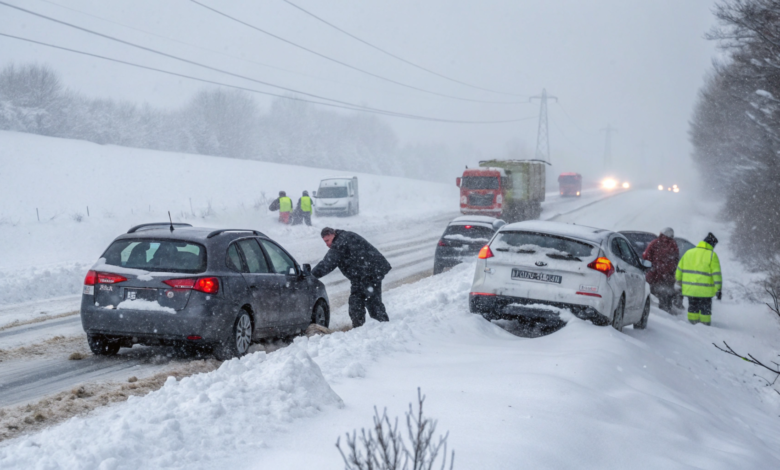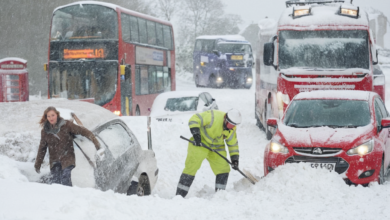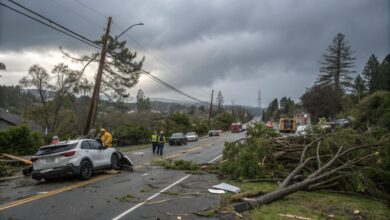Severe Snowfall Disrupts Travel Across the UK: Authorities Issue Urgent Safety Warnings
Chaos in the UK: Heavy Snowfall Strands Vehicles and Closes Major Roads

Severe snowfall has caused significant travel disruptions throughout the United Kingdom, particularly impacting northern England. The adverse weather conditions have resulted in stranded vehicles and multiple accidents, leading to the closure of major roadways and the suspension of rail services.
Road Closures and Accidents
Key thoroughfares such as the A628 Woodhead Pass, which connects Greater Manchester and South Yorkshire through the Peak District, have been closed in both directions due to hazardous conditions. Additionally, the A66 between the M6 and A1(M) in County Durham and Cumbria has been shut down, while a collision involving a car and a heavy goods vehicle (HGV) prompted closures on the A1 southbound in South Yorkshire.
Traffic was halted on the M1 southbound between Bournmoor and Bishop Auckland in County Durham, with vehicles immobilized for hours before being released mid-morning. The A33 in Hampshire faced closures due to an overturned vehicle, and flooding caused by melting snow affected the A3 northbound in the same region.
Rail and Air Travel Disruptions
National Rail services between Leeds and Halifax via Dewsbury have been suspended, with disruptions expected to extend into Monday. Avanti West Coast services to and from Liverpool Lime Street were canceled due to depot issues, further complicating travel plans.
Major airports were also affected, with Manchester and Liverpool John Lennon Airports closing their runways for several hours due to heavy snowfall. Manchester Airport advised passengers of potential delays, while Leeds Bradford Airport aimed to reopen its runway by midday, though conditions remained unpredictable. Birmingham Airport resumed normal operations on Sunday morning after an overnight pause for safety, and Bristol Airport reopened late Saturday but warned of delays due to displaced aircraft following cancellations.
Weather Warnings and Safety Measures
The Met Office has issued two amber weather warnings for snow, emphasizing the treacherous conditions that have left rural communities at risk of being cut off. Snow depths of up to 40 cm are forecast for areas above 300 meters. In Wales and the southern Pennines, snowfall could reach 30 cm, with milder air expected to bring a thaw later in the day.
A yellow rain warning has been issued for southern England, with a risk of flooding in low-lying areas. The Environment Agency has placed eight flood warnings and over 100 alerts for rivers, including the Taw and Torridge in Devon. Recorded snowfall has been significant, with 12 cm in Bingley, West Yorkshire, and 10 cm in Shap, Cumbria.
Public Safety Recommendations
Authorities are urging the public to exercise extreme caution and to avoid non-essential travel, particularly in affected regions. For those planning to attend the Liverpool vs. Manchester United game at Anfield Stadium, officials have advised reconsidering travel plans due to the severe weather conditions.
Local authorities and emergency services continue to monitor the situation closely and are prepared to respond to any further developments. Residents are encouraged to stay updated with official weather alerts and to follow guidance from local authorities to ensure their safety.
This formal and detailed report provides comprehensive information on the widespread impact of the severe snowfall across the UK, emphasizing infrastructure disruptions, emergency responses, and public safety measures.




